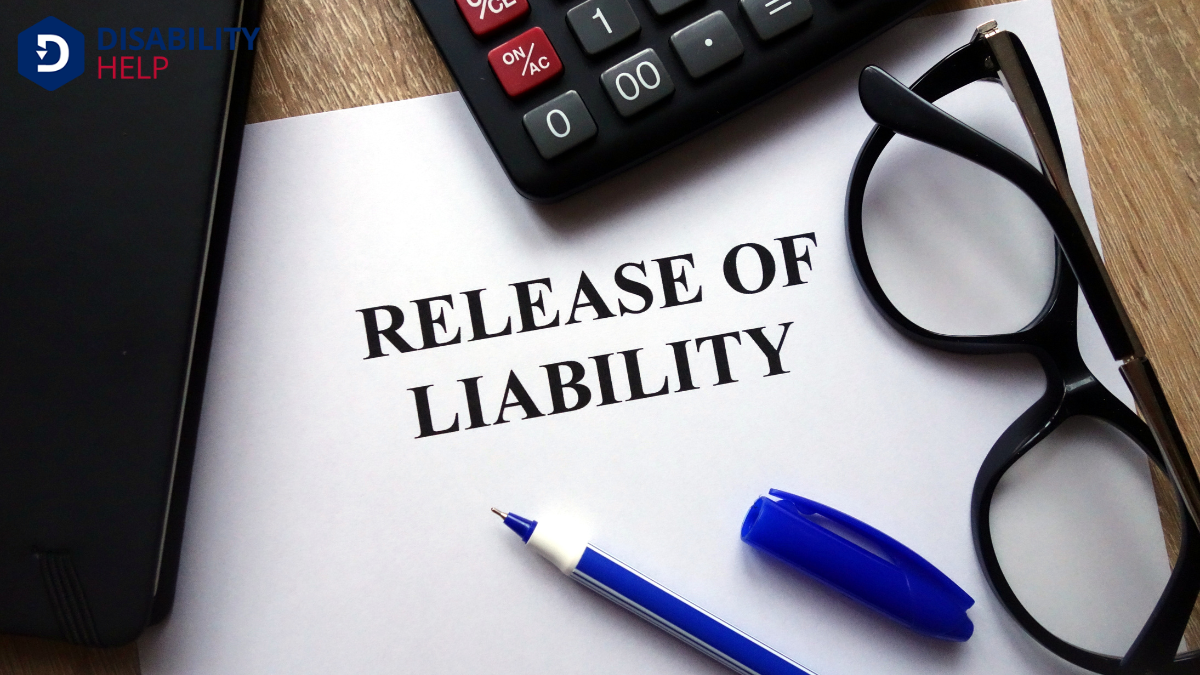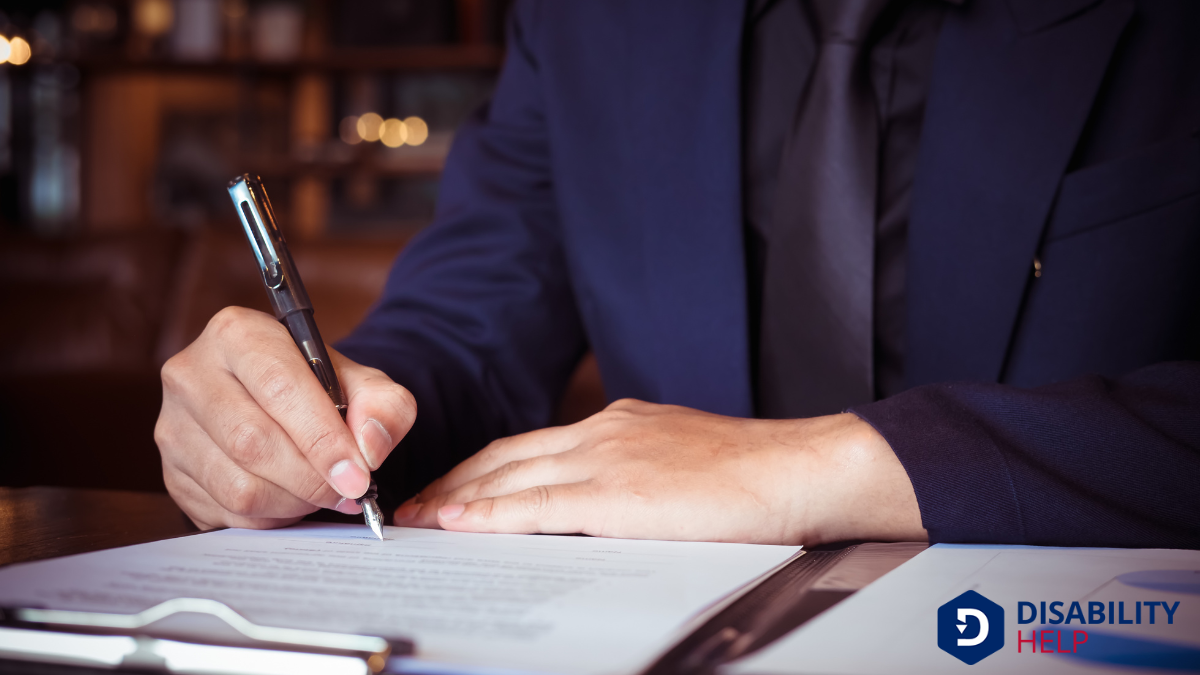Let's explore the ins and outs of a Release of Liability Form, a key legal document that plays a vital role in protecting individuals and businesses from potential claims. It fundamentally outlines the terms under which one party agrees not to hold the other responsible for certain risks. But what makes this form so important, and how does it function in various scenarios? Let's find out more.
Key Takeaways
- A Release of Liability Form is a legal agreement protecting one party from future claims or lawsuits.
- It outlines specific activities or circumstances under which the releasor waives legal rights.
- The form includes the identification of involved parties and a description of potential risks.
- It is essential for high-risk activities like sports or concerts to prevent legal disputes.
- Signing the form indicates voluntary agreement and understanding of its legal implications.
Definition and Purpose of a Release of Liability Form
When we talk about a Release of Liability Form, it’s important to understand that it’s a legal document designed to protect one party from legal claims or lawsuits from another. Fundamentally, we’re agreeing to not hold the other party responsible for any potential harm or damages we might experience.
These forms are essential in situations where risk is involved, like sports activities or service contracts. By signing, we acknowledge the risks and voluntarily waive our right to seek legal action should something go wrong.
This mutual understanding helps foster trust and clarity between the parties involved. It’s significant for us to recognize the importance of these forms in preventing misunderstandings and ensuring all parties are on the same page regarding liability.
Key Elements Found in a Release of Liability Form

Let's look at the key elements that make a release of liability form effective.
We need to understand the essential clauses that protect both parties and guarantee participant acknowledgment requirements are met.
Essential Clauses Included
Steering through the essential clauses of a Release of Liability Form can feel intimidating, yet understanding these key elements is essential for guaranteeing both parties are protected.
First, we must guarantee the form clearly identifies the parties involved. This includes the releasor, who's giving up the right to sue, and the releasee, who's being protected.
Next, we need to outline the specific activities or circumstances covered by the form. This provides a clear scope of the agreement.
It's critical to include an indemnityA legal principle requiring one party to compensate another for harm or loss, relevant in disability... clause, which shifts responsibility for any claims or damages back to the releasor.
Finally, we should confirm the inclusionThe practice of creating environments in which any individual or group can be and feel welcomed, res... of a governing law clause, specifying which jurisdiction’s laws will apply in case of disputes.
Participant Acknowledgment Requirements
Understanding the participant acknowledgment requirements is vital when drafting a Release of Liability Form. We must guarantee that participants clearly understand the risks involved and willingly accept them. To achieve this, we need to use straightforward language that outlines potential dangers and the extent of the release.
Participants should sign the document, confirming they've read and understood the terms. Incorporating a statement that they voluntarily agree to the conditions is essential.
It's also wise to include a section where participants can ask questions before signing. This helps avoid misunderstandings and reinforces their informed consentThe legal and ethical requirement to ensure that individuals with disabilities understand and agree ....
Let’s remember that clarity and transparency are key, guaranteeing that everyone knows their rights and responsibilities before they engage in any activity.
Common Situations Requiring a Release of Liability Form
When considering various activities that involve some level of risk, it's crucial to understand common situations where a release of liability form is necessary.
We often encounter these forms when participating in activities like skydiving, rock climbing, or recreational sports. Businesses offering these activities want to make sure they're protected from potential lawsuits if an accident occurs.
Additionally, volunteering for certain events or organizations, especially those involving physical labor or high-risk environments, may also require us to sign a release.
Even attending certain events, such as concerts or festivals, might necessitate one if there are potential hazards involved.
Legal Implications of Signing a Release of Liability Form
When we sign a release of liability form, we're entering a binding agreement that can have significant legal consequences.
We should be aware that this often means waiving certain legal rights, such as the ability to sue for injuries.
It's essential to understand the enforceability conditions to guarantee the form is valid and protects both parties as intended.
Binding Agreement Terms
Although signing a release of liability form might seem straightforward, it carries significant legal implications that can't be overlooked.
When we put our signatures on these forms, we're not just making a casual agreement; we're entering into a binding contract. This means both parties have legal obligations. The terms in these agreements can vary, but they often outline specific conditions and responsibilities.
It’s essential we carefully review these terms to fully understand what we're agreeing to. By signing, we confirm that we’ve read and accepted all stated terms, making it difficult to contest later.
We should guarantee clarity and ask questions if anything is unclear. Understanding the binding nature helps us make informed decisions and avoid potential disputes.
Waived Legal Rights
Signing a release of liability form means we're agreeing to waive certain legal rights, which can have serious consequences. By doing so, we may lose the ability to sue the other party for injuries or damages that occur.
It's important for us to understand the implications before signing. Here's what we give up:
- Right to Compensation: We forfeit the chance to seek financial recovery even if the other party's negligenceA legal concept where a party fails to exercise reasonable care, resulting in harm to another person... caused harm.
- Legal Recourse: We may be unable to take legal action for any unforeseen incidents or accidents that might arise.
- Protection: We lose certain protections that might've been available through the court system.
Understanding these waived rights guarantees we're making informed decisions when signing such documents.
Let's proceed with caution.
Enforceability Conditions
Before we sign a release of liability form, it’s crucial to understand the enforceability conditions that shape its legal standingThe legal right to bring a lawsuit, which requires that the individual bringing the suit has a direc....
First, the form must be clear and specific about the risks and rights being waived. If the language is ambiguous, courts mightn't uphold it.
Second, both parties need to sign the form voluntarily, without coercion or undue pressure. If we feel forced, the agreement may not be valid.
Third, the form should comply with local laws, as regulations vary by jurisdiction. If a provision violates these laws, it might be considered invalid.
Finally, minors usually can't be held to these agreements without a parent's consent.
Factors to Consider Before Signing a Release of Liability Form

When considering signing a release of liability form, it's vital that we thoroughly understand the implications of our decision. We shouldn't rush into it without evaluating the potential consequences.
Here are three significant factors we must consider:
- Scope of the Release: We need to know exactly what risks we're releasing the other party from. Does it cover specific activities or broader scenarios?
- Legal Language: Legal jargon can be confusing. If terms aren't clear, we should seek clarification or legal advice to guarantee we fully grasp the document.
- Voluntariness: It's important to confirm that we're signing voluntarily, without any undue pressure. This guarantees the agreement is fair and valid.
Understanding these factors helps us make informed decisions and protect our own interests.
How a Release of Liability Form Protects Businesses
While we've examined the importance of understanding a release of liability form from our perspective, let's shift to how these forms serve businesses.
Businesses use these forms to protect themselves from legal claims related to accidents or injuries that may occur during their services or on their premises. By having customers sign these forms, businesses can limit their exposure to lawsuits, reducing the likelihood of costly legal battles.
When customers acknowledge potential risks and agree not to hold the company responsible, businesses can operate with greater confidence. This protection allows them to focus on providing quality services without constant fear of litigation.
Additionally, it helps companies allocate resources more effectively, as they can invest in enhancing services rather than defending against legal claims. This balance fosters a healthier business environment.
Tips for Drafting an Effective Release of Liability Form
Creating an effective release of liability form requires careful attention to detail and a clear understanding of its purpose.
We want to make certain that our form is both thorough and straightforward. Here’s a quick guide to help us draft a clear and enforceable document:
- Identify the Parties Involved: Clearly list all parties, including individuals and entities that are releasing and being released from liability.
- Detail the Scope of the Release: Specify the activities or events covered and any potential risks involved, making sure nothing is left ambiguous.
- Use Clear, Concise Language: Avoid legal jargon. Our goal is for everyone involved to fully understand the terms without confusion.
Conclusion
In summary, we've explored the essential role a Release of Liability Form plays in protecting both parties involved in potentially risky activities. These forms don't just clarify responsibilities; they also build trust and safeguard businesses from legal repercussions. Before signing one, it's important we comprehend the legal implications and guarantee all necessary elements are included. By doing so, we're securing peace of mind and fostering a safer environment for everyone involved. Let's always prioritize informed decision-making.






